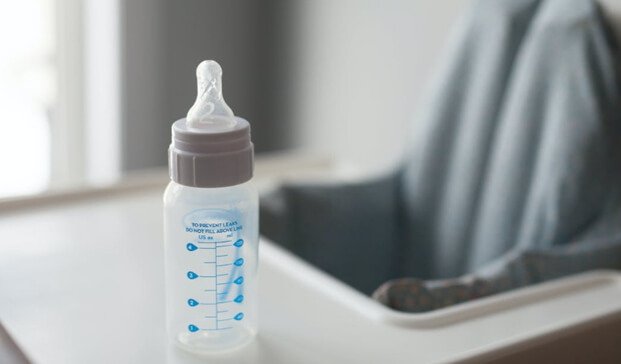There are a lot of factors to consider when choosing the best milk bottle for your infant. The type of nipples, the size of the bottle, and the material the bottle is made out of are all important factors to consider.
In this blog post, we’ll go over all of the different factors you should consider when choosing the best milk bottle for your infant.
Types of Milk Bottles
There are many different types of milk bottles, each with its own benefits and drawbacks. Glass bottles are the most traditional option, and they offer a variety of benefits. They are sturdy and easy to clean, and they can be reused multiple times. However, glass bottles are also heavy and breakable, making them less ideal for families with young children. Plastic bottles are a popular alternative to glass, as they are lighter and more durable. However, some parents worry about the safety of plastic, as it can leach chemicals into the milk. There are also paperboard cartons, which are made from recycled materials and are fully recyclable. However, they are not as sturdy as other options and can be difficult to pour from. Ultimately, the best type of milk bottle depends on the needs of the family.
Materials Used in Milk Bottles
For many years, glass was the preferred material for milk bottles. Its durability and ability to resist temperature changes made it ideal for storing milk. However, glass is also heavy and breakable, which makes it impractical for some consumers. In the 1970s, plastic became the material of choice for milk bottles. Plastic is much lighter than glass, making it easier to transport and store. It is also shatter-resistant, which reduces the risk of accidents. However, some consumers are concerned about the safety of plastic, as it can leach chemicals into food and beverages. As a result, many companies are now using more sustainable materials, such as paper and aluminum, for their milk bottles.

Size and Capacity of Milk Bottles
The average milk bottle has a capacity of two quarts, which is the equivalent of 64 fluid ounces or 1.89 liters. Most milk bottles are between 8 and 16 ounces, which is about 250 to 500 ml. Milk bottles can be made from glass, plastic, or aluminum. Glass bottles are the most common type of milk bottle. They are usually clear or have a white tint. Plastic milk bottles are made from polyethylene terephthalate (PET) and are usually opaque. Aluminum milk bottles are less common than glass or plastic milk bottles. They are often used for sports drinks and other beverages. Milk bottles typically have a screw-on cap that seals the bottle tight. The average milk bottle has a capacity of two quarts, which is the equivalent of 64 fluid ounces or 1.89 liters. Most milk bottles are between 8 and 16 ounces, which is about 250 to 500 ml.
Milk bottles can be made from glass, plastic, or aluminum. Glass bottles are the most common type of milk bottle. They are usually clear or have a white tint. Plastic milk bottles are made from polyethylene terephthalate (PET) and are usually opaque. Aluminum milk bottles are less common than glass or plastic milk bottles, but they offer some advantages, such as being lighter weight and more durable. Milk bottles typically have a screw-on cap that seals the bottle tight. Screw-on caps provide an airtight seal that helps to keep milk fresh.
Price and Availability of Milk Bottles
Although glass milk bottles have been around for centuries, their popularity has declined in recent decades. Many people believe that glass milk bottles are more expensive than plastic ones, but this is not always the case. The price of a glass milk bottle depends on the size and style of the bottle. There are many different sizes and styles of milk bottles available, so it is possible to find one that fits your needs and budget.


